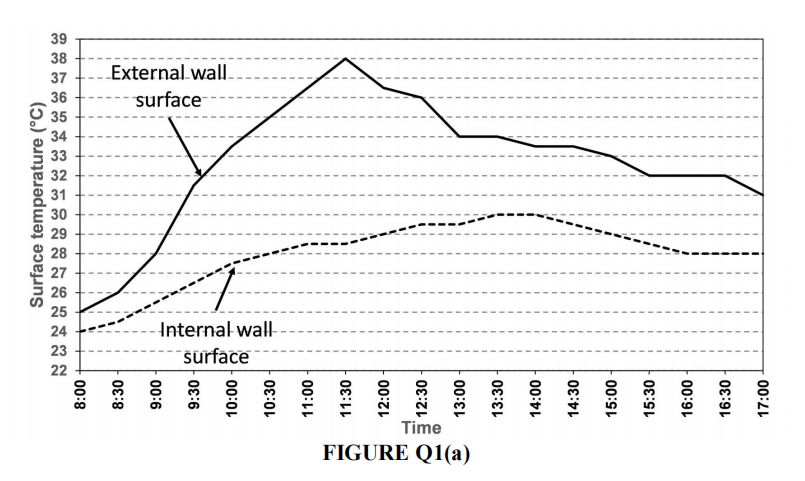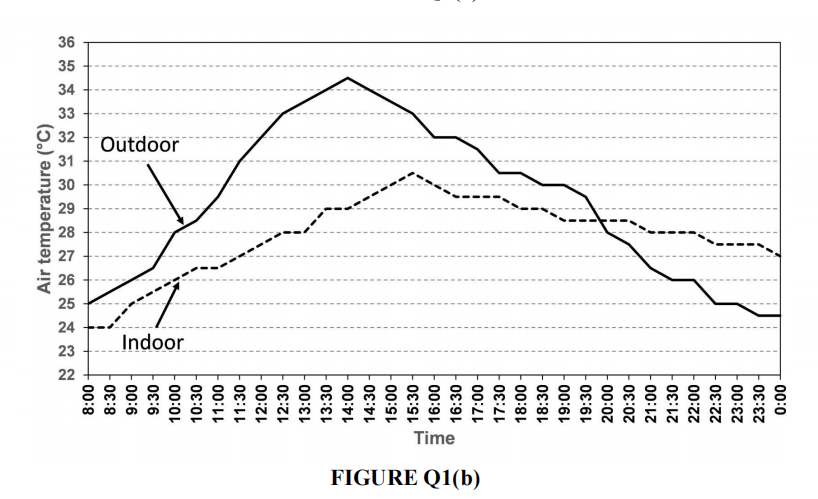A field investigation of the thermal environment has been conducted for a room with an external wall facing east. The wall are made of 150 mm brick (k = 0.9 W/m°C) and 15 mm of plaster (k= 0.3 W/m°C) on both sides. The results are as shown in Figure Q1(a) and Figure Q1(b), representing the temporal wall surface temperature and indoor air temperature respectively. (i)Based on the graph in Figure Q1(a), analyze the value of the conductive heat flow (Q) for the wall at 11:00 a.m. and 15:00 p.m. and discuss ONE (1) potential cause of the difference. Given the value of external and internal surface resistance are 0.06 m2°C/W and 0.12 m2°C/W, respectively. Meanwhile, the area of the wall is 12m2 . (ii) Based on your reason in Q1(i), propose TWO (2) practicable strategies that can reduce the external wall surface temperature during that time. (iii) As shown in Figure Q1(b), the indoor air temperature of the room reached its peak (maximum temperature) at about 1.5 hours later than that of outdoor air temperature. Explain ONE (1) reason for this delayed effect
Q1 A field investigation of the thermal environment has been conducted for a room with
an external wall facing east. The wall are made of 150 mm brick (k = 0.9 W/m°C) and
15 mm of plaster (k= 0.3 W/m°C) on both sides. The results are as shown in Figure
Q1(a) and Figure Q1(b), representing the temporal wall surface temperature and
indoor air temperature respectively.
(i)Based on the graph in Figure Q1(a), analyze the value of the conductive heat
flow (Q) for the wall at 11:00 a.m. and 15:00 p.m. and discuss ONE (1)
potential cause of the difference. Given the value of external and internal
surface resistance are 0.06 m2°C/W and 0.12 m2°C/W, respectively.
Meanwhile, the area of the wall is 12m2 .
(ii) Based on your reason in Q1(i), propose TWO (2) practicable strategies that
can reduce the external wall surface temperature during that time.
(iii) As shown in Figure Q1(b), the indoor air temperature of the room reached its
peak (maximum temperature) at about 1.5 hours later than that of outdoor air
temperature. Explain ONE (1) reason for this delayed effect.
(iv) As shown in Figure Q1(b), the indoor air temperatures were higher than
outdoor from 20:00 p.m. Explain ONE (1) possible reason for this event.
(v) Suggest ONE (1) strategy to reduce the indoor air temperature at night.


Step by step
Solved in 3 steps









